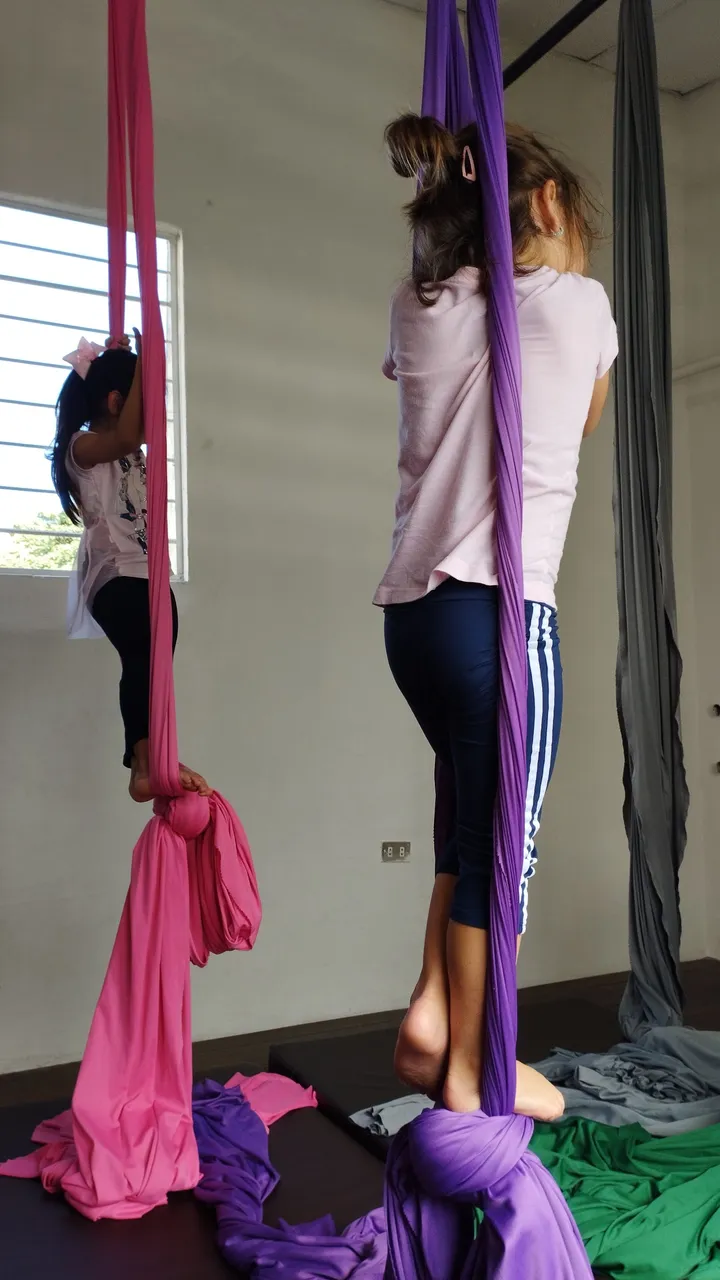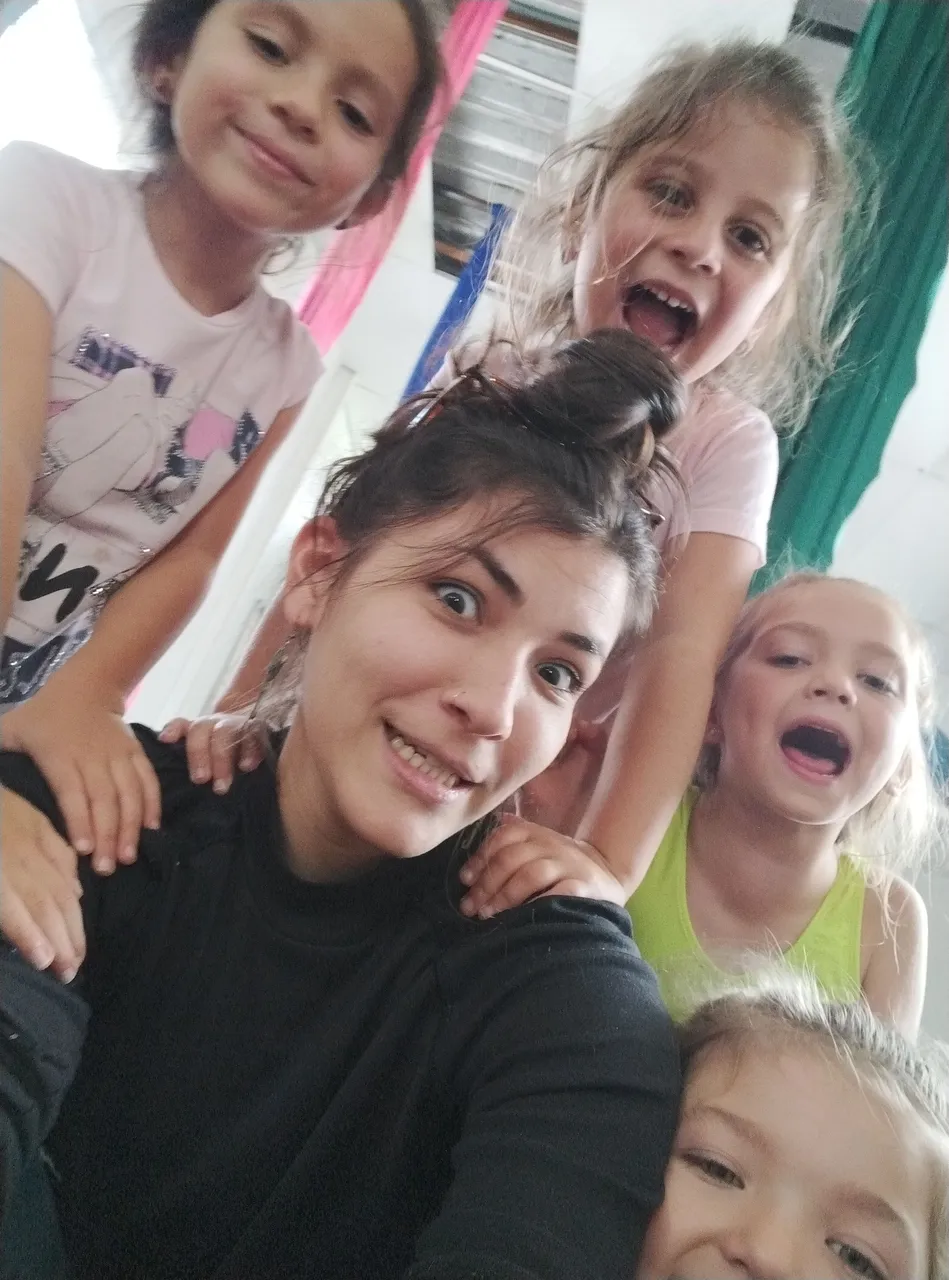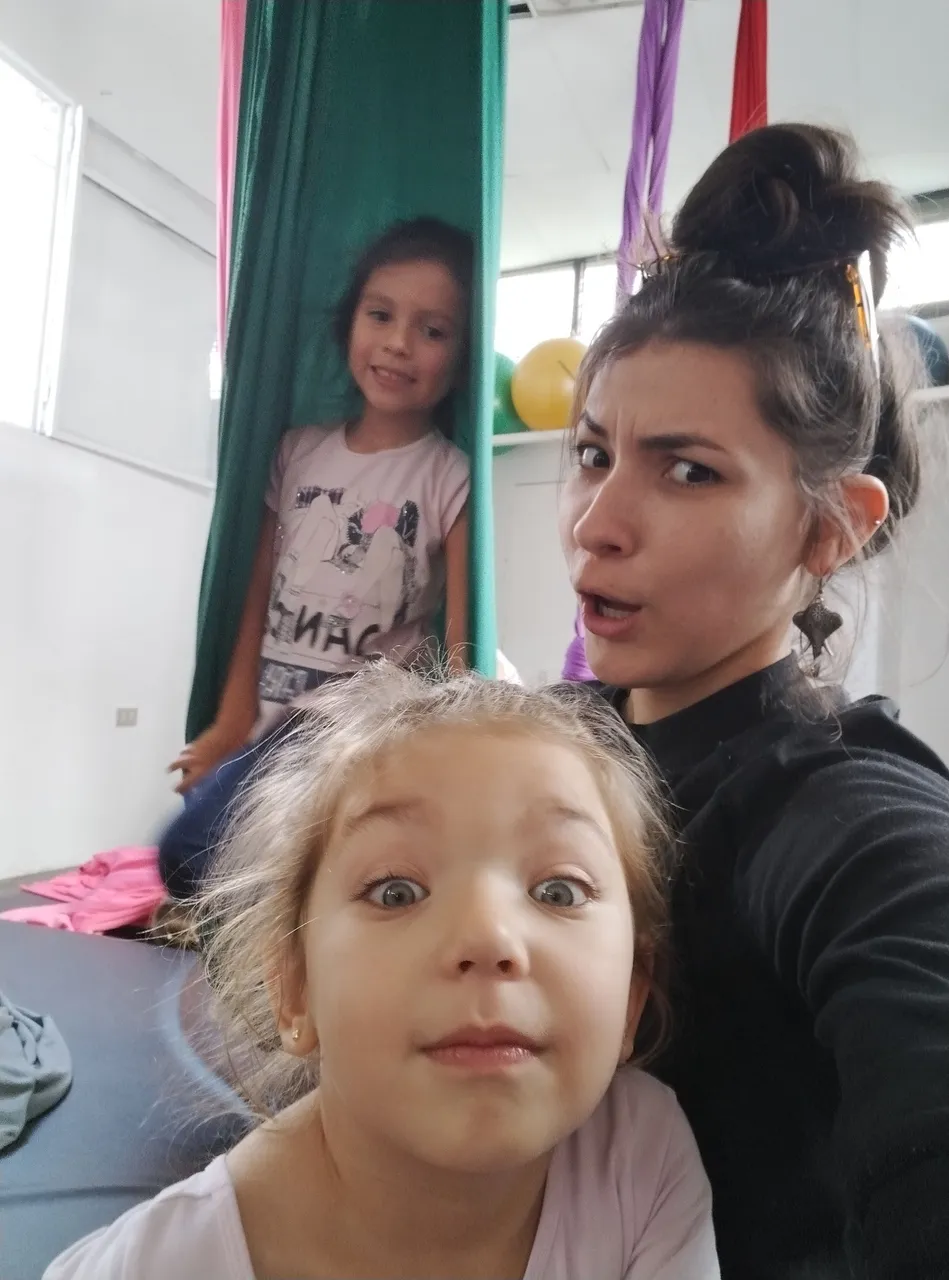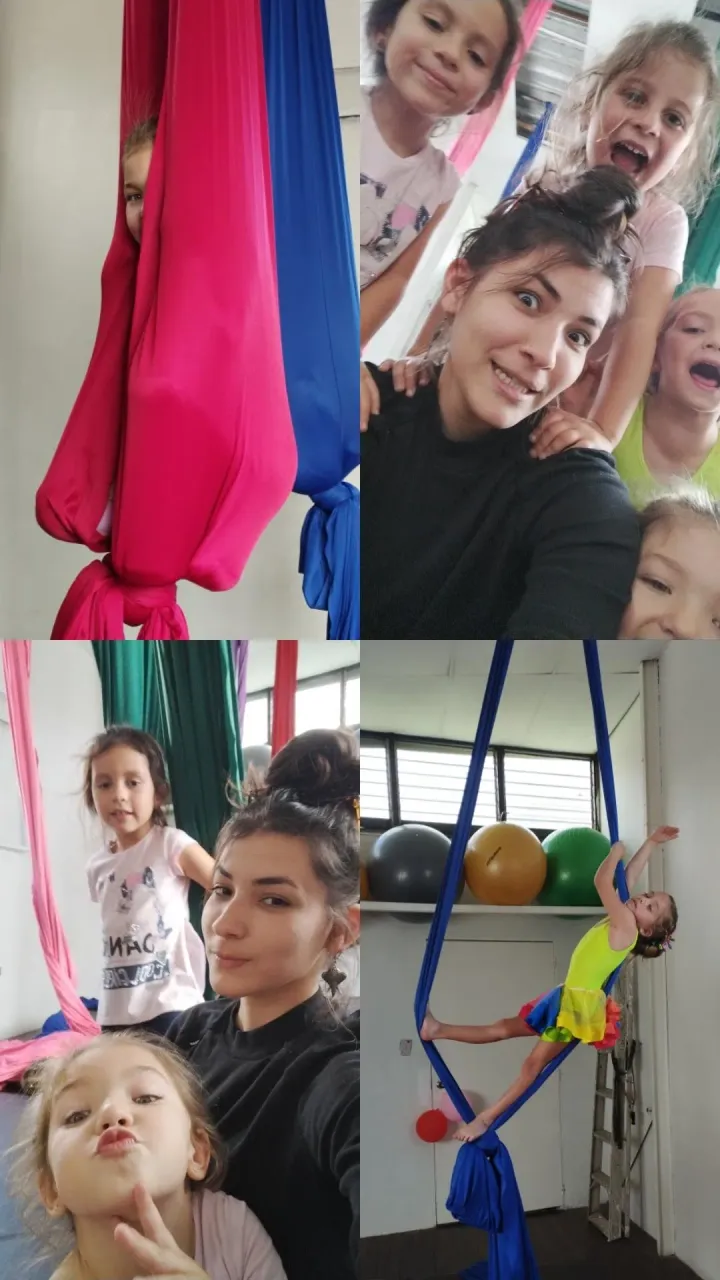
Les he hablado en publicaciones anteriores sobre el bloqueo que yo tenía con darle clases a niños y niñas,y resulta que ahora es lo que más me encanta. Sigo dándole clases a adultos, solo que darle clases a niñas resulta más hermoso , ya que los niños tienen esa ingenuidad , simpleza e inocencia que los adultos quizá por los miedos han perdido . Mi tarea cómo instructora de yoga aéreo para adultos desde el inicio ha Sido que dejen salir a su niño interior, aunque al darle clases a niñas he perdido un poco ese enfoque hacia los adultos , no digo que es complejo pero si que es una tarea más laboriosa el hecho que los adultos consigan conectar con su niño interior. El proceso que conlleva darle clases a niñas me ha logrado conectar con mi niña interior, en cómo yo hubiera querido tener una maestra a mis cinco años de edad y automáticamente me hago preguntas como por ejemplo: ¿Cómo me hubiera gustado que fuera mi instructora de telas aéreas: amorosa, cariñosa , o molesta e irrespetuosa? . En eso pienso cada vez que voy a darles clase, una mala palabra o una mala actitud puede marcarles su infancia de por vida hasta que sean adultos. Entonces, soy muy cuidadosa al momento de dar una consigna, instruccion y hasta cuando llega el momento en el que vamos a jugar ,sin olvidar que a pesar de ser una profesora amorosa también les enseño sobre la disciplina y el compromiso que abarca el arte de las telas aereas. Además de enseñar está disciplina, mi intención es enseñarles también valores. Por ejemplo a compartir entre ellas y a trabajar en equipo. Sucede casi en todas las clases que cuando llegan al salon, siempre quieren elegir la tela en la que quieren trabajar, y todas quieren la rosada. Entonces ayer les dije que yo iba a trabajar en la rosada, para que ellas comprendieran que ninguna tela es de su propiedad , y esa acción hizo en ellas que se colocaran en otra tela sin patalear, ni hacer berrinche. También les hablo de lo que significa la gratitud, al momento de terminar la clase hacemos un círculo donde agradecemos por la clase, también les hablo del amor, del respeto a sus compañeras y a ellas mismas. En la clase está prohibido decir: "no puedo" y quién lo dice debe hacer flexiones o alguna penitencia fácil. De esa manera, ellas van creando en sus pensamientos que si pueden hacer la clase y cualquier cosa que se propongan, con mucha práctica y constancia. Quizá para algunos dirán que son niñas y no comprenden sobre términos a esa edad, pero yo si confío en que si entienden, quizá no ahora porque a penas están aprendiendo muchas cosas nuevas en el mundo pero, los primeros años de un niño son los más importantes y determinan su vida.
I have spoken to you in previous publications about the block I had with teaching boys and girls, and it turns out that now it is what I love the most. I continue teaching adults, only teaching girls is more beautiful, since children have that ingenuity, simplicity and innocence that adults have lost perhaps due to fear. My task as an aerial yoga instructor for adults from the beginning has been to let their inner child out, although by giving classes to girls I have lost that focus towards adults a bit, I am not saying that it is complex but it is one more task laborious the fact that adults manage to connect with their inner child.The process involved in teaching girls has allowed me to connect with my inner child, how I would have liked to have a teacher at my five years of age and I automatically ask myself questions such as: How would I have liked my instructor to be? aerial fabrics: loving, affectionate, or annoying and disrespectful? . I think about that every time I go to teach them, a bad word or a bad attitude can mark their childhood for life until they are adults. So, I am very careful when giving instructions, instructions, and even when the time comes when we are going to play, without forgetting that despite being a loving teacher, I also teach them about the discipline and commitment that the art of the aerial fabrics. In addition to teaching this discipline, my intention is to also teach them values. For example, to share among themselves and to work as a team. It happens in almost every class that when they get to the classroom, they always want to choose the fabric they want to work on, and they all want the pink one. So yesterday I told them that I was going to work on the pink one, so that they would understand that no fabric is their property, and that action made them place themselves on another fabric without kicking or throwing a tantrum. I also talk to them about what gratitude means, at the end of the class we make a circle where we thank them for the class, I also talk about love, respect for their classmates and for themselves. In class it is forbidden to say: "I can't" and whoever says it must do push-ups or some easy penance. In this way, they are creating in their thoughts that if they can do the class and whatever they set their mind to, with a lot of practice and perseverance. Perhaps for some they will say that they are girls and do not understand terms at that age, but I do trust that they do understand, perhaps not now because they are barely learning many new things in the world, but the first years of a child are the most important and determine your life.

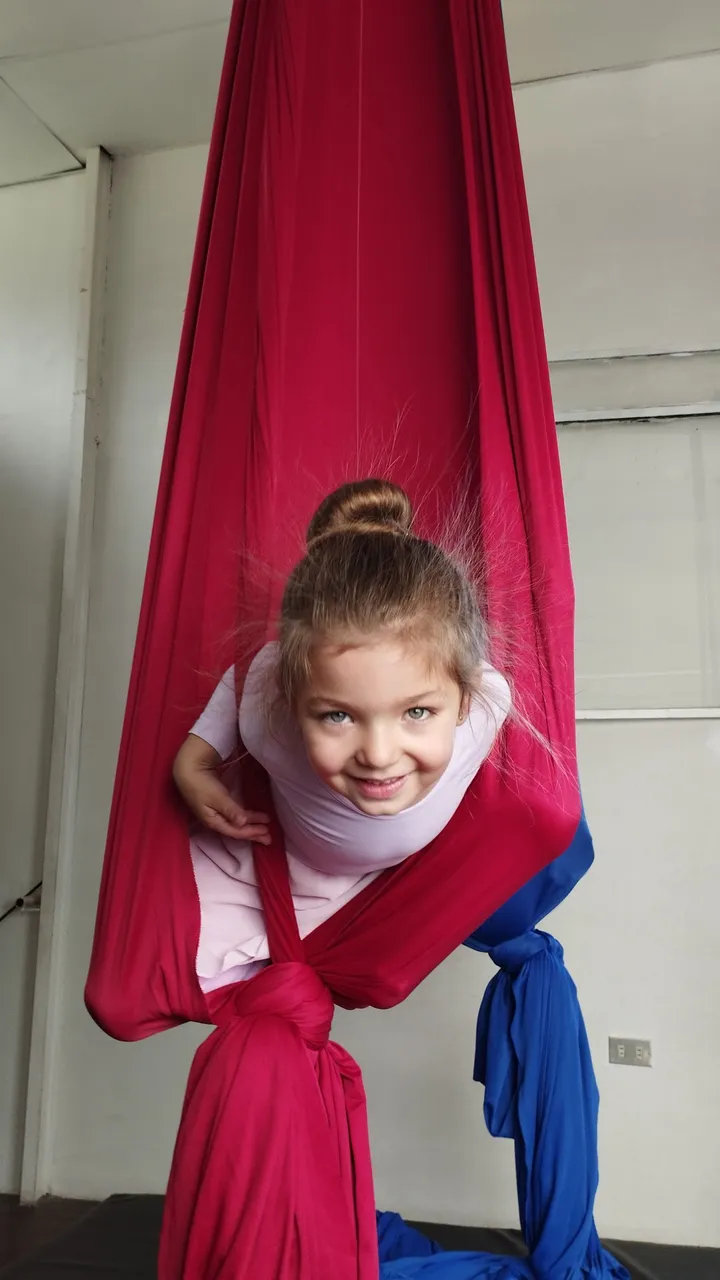

Psicología: / Psychology
"Según la teoría de Piaget en torno al aprendizaje y la adquisición de conocimiento, los 5 años se encuentran inmersos en el corazón mismo de la Etapa Pre-Operacional (2 a 7 años de edad). En ella, el niño aprende a ponerse en el lugar de los demás, es decir, descubre que los demás ven y piensan del mismo modo que él.En esta etapa puede empatizar, mentir e ironizar, lo que representa un cambio importantísimo en la mentalidad del niño. Los niños de esta edad suelen ya hablar y razonar de modo similar a un adulto, con un claro agarre de la realidad pero con una curiosidad insaciable.Suelen hacer preguntas constantemente e interesarse por el funcionamiento de las cosas y del mundo, así como de la vida de los padres antes de su nacimiento. Es así que descubren temas trascendentales como la muerte y el nacimiento."
"According to Piaget's theory of learning and the acquisition of knowledge, the 5 years are immersed in the very heart of the Pre-Operational Stage (2 to 7 years of age). In it, the child learns to put himself in the place of others, that is, he discovers that others see and think in the same way as him.At this stage he can empathize, lie and ironize, which represents a very important change in the child's mentality.Children of this age They usually already speak and reason in a similar way to an adult, with a clear grasp of reality but with an insatiable curiosity. They tend to constantly ask questions and are interested in how things and the world work, as well as the lives of their parents before of his birth. This is how they discover transcendental themes such as death and birth."


